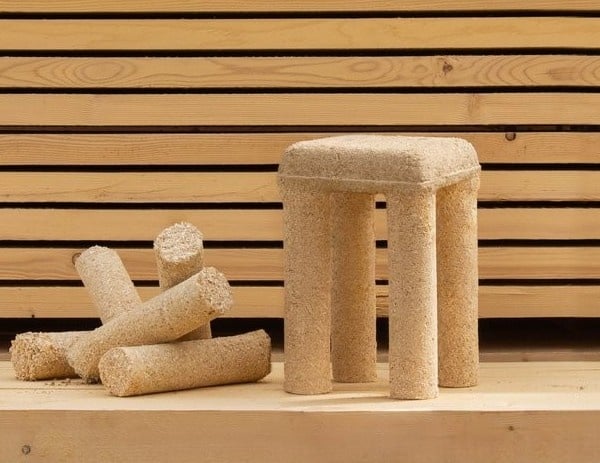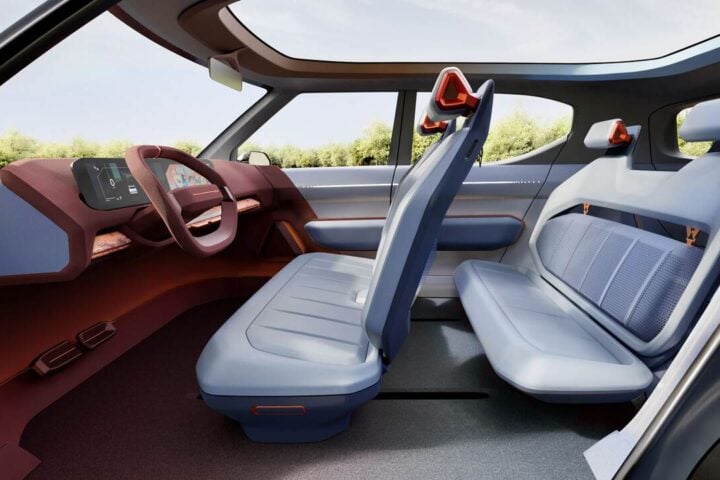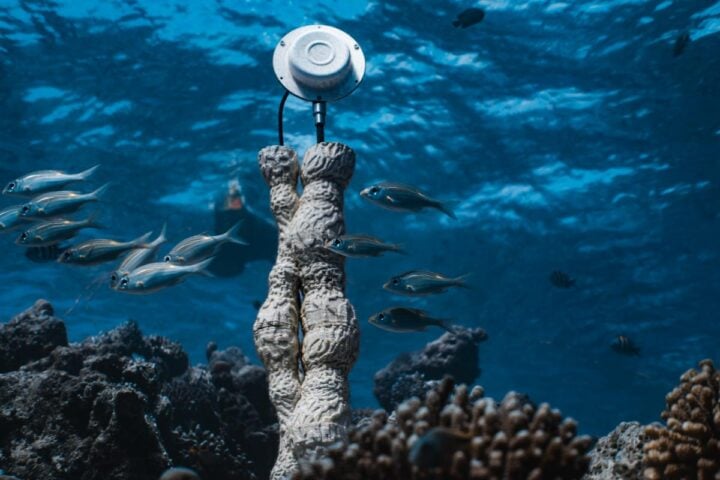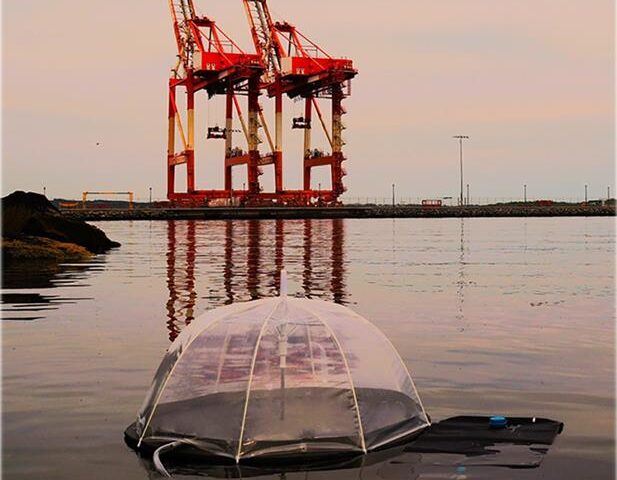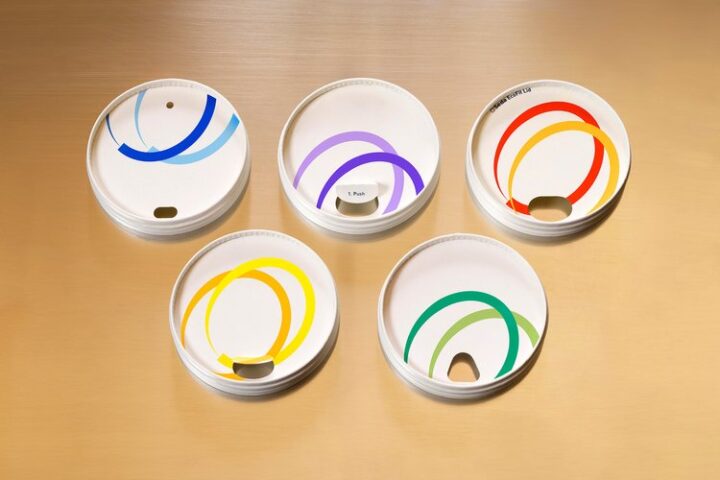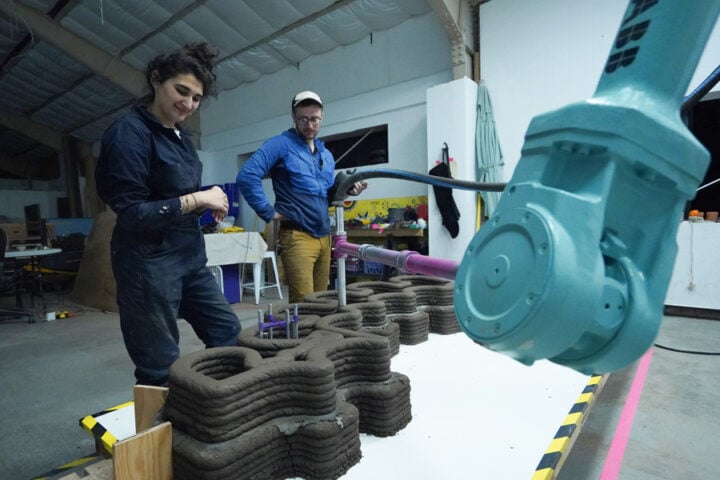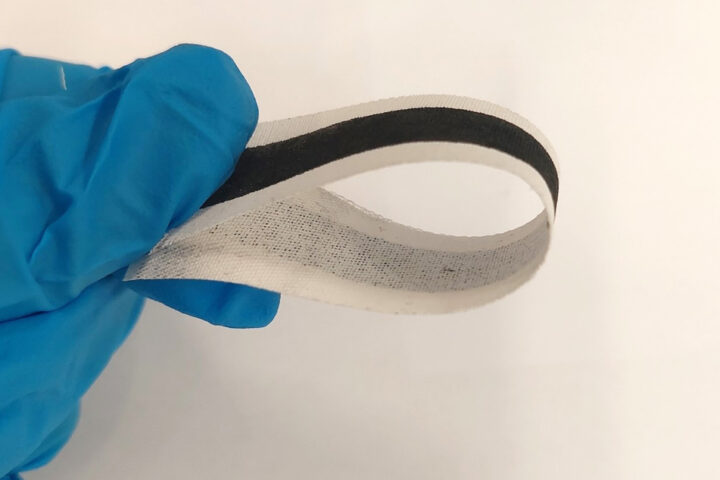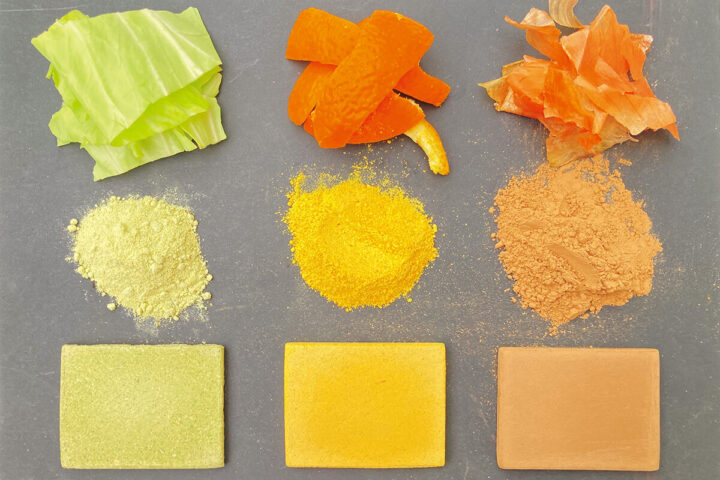Underground train commuters face alarming levels of particulate matter pollution daily. The Victoria Line shows median PM2.5 concentrations of 361 μg/m³, with peaks exceeding 800 μg/m³ between Pimlico and Brixton. The WHO’s 2021 air quality guidelines recommend annual PM2.5 exposure should not exceed 5 μg/m³, making these underground levels 70 times higher than safe limits.
Mia Patterson Cox, a recent Industrial Design and Technology graduate from Loughborough University, witnessed this problem firsthand during her placement year in London. “I often thought about the hot stuffy environment and would be concerned when I found dust around my nostrils after travelling on underground trains,” said Mia. This experience prompted her to create Aerate; a neck-worn air purifier specifically designed for underground commuters.
The Underground Pollution Problem
Underground railway dust comprises 47% iron oxide, 7% elemental carbon, 11% organic carbon, and 14% metallic and mineral oxides. PM2.5 concentrations in London Underground carriages reach 18 times higher than street level, ranging from 14 to 734 μg/m³.
Exposure to airborne particulate matter represents a major risk factor for mortality and morbidity, associated with asthma, lung cancer, heart disease, myocardial infarction, and stroke, type 2 diabetes, dementia and loss of cognitive function. Particles less than 2.5 micrometers can penetrate deep into lungs and potentially enter the bloodstream.
The Northern Line shows median concentrations of 194 μg/m³, Bakerloo 55 μg/m³, Piccadilly 52 μg/m³, Metropolitan 28 μg/m³, Central 15 μg/m³, Jubilee 11 μg/m³, Circle 8 μg/m³, and District 4 μg/m³. These iron-rich particles originate from wheel, track, and brake abrasion, then get recirculated through tunnel systems via the piston effect when trains pass.
How Aerate Works
Aerate features two fans operating at 5,500 rotations per minute, drawing air through Spunbond Polypropylene (SBPP) filters that capture particles as small as 2.5 micrometers. The fans propel purified air directly in front of the user’s face, creating what Patterson Cox describes as a “clean bubble of breathable air.”
The device incorporates a PMS1003 sensor that continuously monitors air quality and adjusts fan speeds automatically when in AUTO mode. “The product contains a PMS1003 sensor which continually monitors the air for microparticles, adjusting the fan speeds for safety if the product is in AUTO mode,” Patterson Cox detailed to Karmactive.
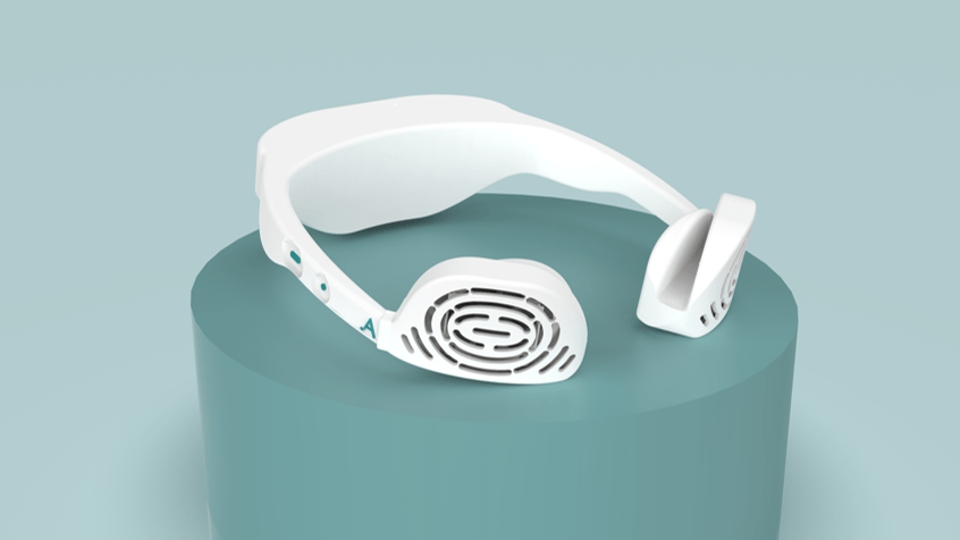
The companion Aerate app receives real-time data from the sensor, providing users with live and historical PM2.5 readings. Users can view pollution hotspots on a map, plan journeys with lower particle concentrations, and receive filter change notifications after approximately 40 hours of use. “The sensor feeds live data readings into the Aerate phone app, where the user can see live and historical data readings, view hotspots on a map, plan journeys with low particle concentration, and read articles to increase their environmental education,” Patterson Cox elaborated to Karmactive.
Real-World Testing and Development
Patterson Cox conducted experience prototyping using handheld fans and flour as particle substitutes to test the device’s effectiveness. These tests demonstrated Aerate’s capability to shield users from airborne particles by creating directional airflow that diverts particles away from the breathing zone.
“The optimum angles, speeds and distance from the face have been tested,” Patterson Cox revealed to Karmactive. The prototype features adjustable fan heads, though it lacks integrated electronics at this development stage.
Market Context and Comparisons
The global wearable air purifier market reached $880 million in 2023 and projects to hit $1.8 billion by 2030, growing at 11.2% CAGR. The trend toward wearable air purifiers gains momentum as consumers seek portable solutions for air pollution, particularly in public transport settings.
Existing products like LG’s PuriCare wearable air purifier offer comparison points. LG’s device weighs 94-126g, features H13 HEPA filters capturing 99.97% of particles ≥0.3μm, operates 2-8 hours on an 820mAh battery, and produces 35-52dB noise levels. LG filters cost approximately $30 Singapore dollars per replacement set.
Aerate differentiates itself through its integrated air quality sensor and real-time data mapping capabilities, addressing underground-specific pollution patterns rather than general air filtration.
Scaling and Infrastructure Challenges
“I had explored multiple avenues to find a solution to this problem. The first thing people think is ‘the product only helps the user, not everyone’ and that they want a standalone air purifier in the Tube,” Patterson Cox clarified to Karmactive.
She outlined why personal devices offer advantages over infrastructure solutions: “The Tube network is very old, and it is difficult to carry out maintenance work on the older lines like Victoria and Bakerloo. It is expensive to install countless air purifiers over the network. It would take a lot of time to install air purifiers.”
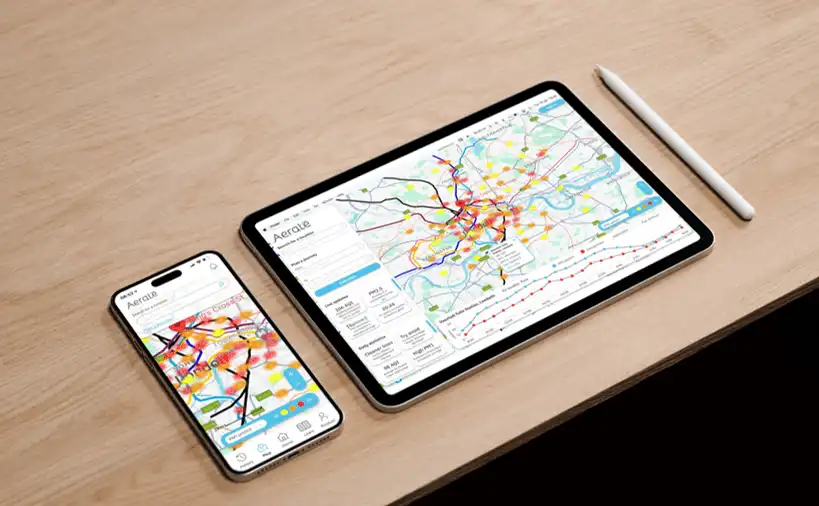
The crowdsourced data approach addresses collective benefit concerns. “The more users that purchase the product and use it, the more anonymous data is fed into the public online data store which anyone can view to see particle exposure hotspots and plan journeys with lower pollution levels,” Patterson Cox emphasized to Karmactive.
This approach aligns with broader sustainable transport initiatives that prioritize clean mobility solutions to reduce environmental impact and health risks for commuters.
Similar Posts
Ventilation Standards and Integration
Transport for London maintains high air change rates in underground carriages. The air inside Tube carriages changes more than 20 times every hour, exceeding the 6-12 times recommended by SAGE and RSSB. However, this ventilation recirculates iron-rich particles rather than removing them.
“There are high ventilation rates in the London Underground, but this is passing iron-rich particles around the network via the piston effect, rather than cleaning it,” Patterson Cox clarified to Karmactive. “Aerate would produce a movement of air which is initially ‘dirty’ but passed through the filters to be ‘clean’ and that is delivered into the area in front of the users face.”
TfL acknowledges that Tube dust levels remain a concern and has increased annual cleaning budgets by a third to £2 million, while exploring potential new innovations to reduce dust levels, including new air filtration systems.
Health Impact Research
Recent research at ten underground stations across seven London lines found users may inhale more airborne particles than previously recorded, with fine particles naturally clumping together to appear larger than their actual size. Traditional monitoring methods measuring particles by mass may underestimate the abundance of smaller, potentially more harmful particles.
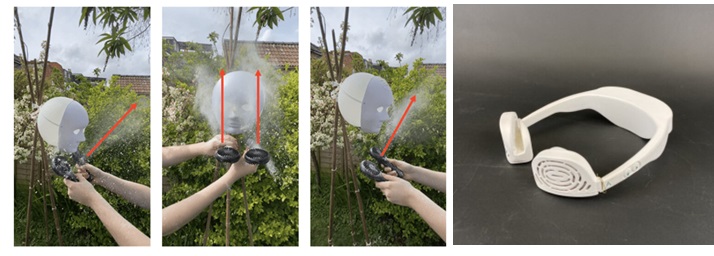
Studies examining underground railway health effects show mixed results, with some finding no immediate lung function changes in workers, while others document correlations between PM2.5 exposure and health outcomes.
Future Applications and Development
Patterson Cox envisions broader applications beyond underground transport. “Although not it’s intended use (and research and testing has not been conducted for this), the product could be used outside against hay fever- though this sensor in particular pay is not able to detect pollen,” she disclosed to Karmactive.
Technology advancement may enable more precise sensors. “With the advancement of nano-technology, sensors will be able to be made smaller and more precise- as the shape and size of parts of my product are constrained by the current technology available to make live detections of particles on such a small scale,” Patterson Cox explained to Karmactive.
The data collection aspect serves broader public health goals. “With the sensor inputting data to the public data store, I aim to increase awareness of particle exposure in underground systems and hope that this could also transfer to on-street too, overall increasing the public’s education and health,” she conveyed to Karmactive.

Environmental Benefits
“Aerate is necessary now as an immediate solution to iron particles on the London Underground as not enough is happening in the network yet to assist with this,” Patterson Cox stressed to Karmactive. The device provides immediate personal protection while contributing to system-wide air quality monitoring.
By filtering iron particles and other pollutants continuously, Aerate potentially benefits all underground passengers through improved air circulation. The aggregated data helps identify pollution patterns that could inform infrastructure improvements.
Patterson Cox emphasizes the urgent need for intervention: “Without Aerate, respiratory conditions can be aggravated, hindering people from reaching their full potential. I aim to pave the way for a safer travel experience on underground trains, promoting health and confidence among users and commuters alike.”
Technical Specifications and Future Development
The current prototype demonstrates core functionality through experience testing. Filter efficiency targets particles ≥2.5μm diameter, while the PMS1003 sensor detects particles down to 0.3μm for comprehensive air quality monitoring.
Manufacturing considerations include component sourcing, battery optimization, and regulatory compliance paths. The device must balance weight, noise levels, and battery life for practical daily use during typical commuting periods of 1-2 hours.

Future development may incorporate additional sensors for different particle types, improved filter materials, and enhanced app features for route optimization based on real-time pollution data across transport networks. This aligns with broader trends toward sustainable transportation solutions that prioritize both environmental protection and public health.
The article outlined Aerate’s design approach combining immediate personal protection with collective data gathering. Patterson Cox’s testing demonstrated particle deflection capabilities, while integrated sensors enable pollution mapping. Technical specifications address underground-specific challenges through targeted filtration and real-time monitoring. Market analysis positioned the device within growing wearable purifier trends. Ventilation context explained how existing systems recirculate rather than filter particles. Health research highlighted underground exposure risks. Development considerations covered scaling challenges and future applications beyond transport settings.
Exclusive Q&A with Mia Patterson Cox
Industrial Design and Technology BA from Loughborough University
About the Interview: The following are exclusive statements given to Karmactive by Mia Patterson Cox, creator of Aerate – a revolutionary neck-worn air purifier designed specifically for underground train commuters.
1) The Tube network is very old and it is difficult to carry out maintenance work on the older lines like Victoria and Bakerloo.
2) It is expensive to install countless air purifiers over the network.
3) It would take a lot of time to install air purifiers.
4) They can’t tell people their particle exposure- which is a USP that my project has a sensor that links to an app, separating it from other neck worn fans.
The more users that purchase the product and use it, the more anonymous data is fed into the public online data store which anyone can view to see particle exposure hotspots and plan journeys with lower pollution levels. The database is to assist with people making INFORMED DECISIONS about their journeys.
So there are high ventilation rates in the London Underground but this is passing iron-rich particles around the network via the piston effect, rather than cleaning it. Aerate would produce a movement of air which is initially ‘dirty’ but passed through the filters to be ‘clean’ and that is delivered into the area in front of the users face.
With the advancement of nano-technology, sensors will be able to be made smaller and more precise- as the shape and size of parts of my product are constrained by the current technology available to make live detections of particles on such a small scale.
With the sensor inputting data to the public data store, I aim to increase awareness of particle exposure in underground systems and hope that this could also transfer to on-street too, overall increasing the public’s education and health.






